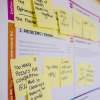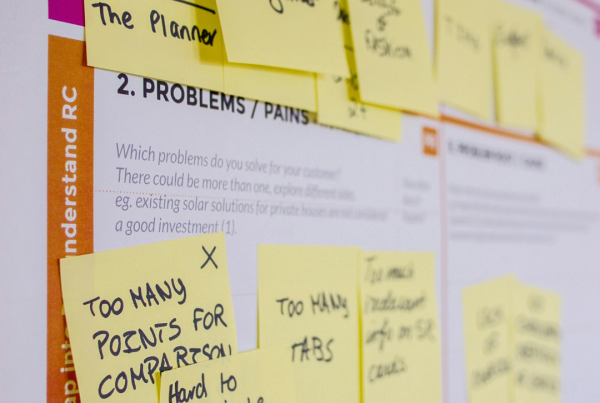Remarkable things usually come from humble beginnings.
For any creatives who have done small-time freelancing, you’d know what I’m talking about.
Most of us start small. When I say small, I’m talking 3-figure projects in the early days. You may get lucky and clinch a 4-figure project every now and then.
But overall, it is tough.
You’ll be living a freelancer’s version of Groundhog Day, where it’s the same shit, different day.
You’ll feel like you’re stuck on one level of a long video game called “The Lord of The Creatives”, working on the same type of small gig for modest clients with tiny budgets.
You’ll go through years when you’re struggling to make ends meet, and wonder:
”When the hell do I make it big?
I used to ask the same question when I was a freelancer, when I was saying yes to any job that came along. Worse, I was trapped at a certain price point for a long time.
It was a conundrum.
Raising my prices may make my customers run in the opposite direction. At the same time, I wasn’t confident enough in my portfolio of work to demand higher fees. I wanted to work with bigger companies with bigger projects and budgets, but I was only little.
I still remember my first job when I started my design agency. It was a $3,000 website project. Up until then, I was struggling to show a balanced and strong portfolio because most of the major projects I did were during my previous job at another agency. It wasn’t much but it got me started.
It took years for Relab to get off the ground, but we’re finally averaging 5 to 6-figure projects, working with big Australian brands. I’m still making mistakes and learning from them, but looking back, these six steps got me out of the small job cycle.
1. Be willing to make big sacrifices
First, you need to understand that the road isn’t a short one. Your ego has no place in this journey.
If you’re only starting and need to pay your bills, then do whatever it takes. By all means, work on those projects that help put food on the table but put in extra hours to search, identify and pitch to your ideal clients.
Back then, I was probably doing 12 -14 hours daily or about 80 hours a week. I still do roughly as many hours today but they’re a different kind of work such as reading, keeping in touch with my network, and strategising.
2. Work on your self-awareness
Self-awareness is an art. If you can master it, you can master almost anything you put your mind to it. Not only do you need a clear set of goals, you must be fully aware of what your strengths and weaknesses are.
Then, you must define who your ideal customer is. An ideal customer is a person or group of people who see the value of your product or services so clearly that it’s difficult for them to picture success without you that they’re willing to spend money on you.
Next, work on the nitty gritty details of how you can achieve that such as business strategy, the resources and skills needed, your budget, how to afford them, etc.
3. Start acting like what you’re meant to be
It’s time to execute your plans. If you’re aiming for bigger clients, then polish your work and presence to look like what it’s worth. Create relevant case studies and showcase work.
Don’t have any? No one’s against spec work — projects that are not real but created as a designer’s concept only.
Study those who have been there, done that. Beef up your interpersonal skills. Learn to get noticed through various mediums such as social media. Be the best salesman for your business.
4. Have patience, always
You will be tested time and time again, so stock up on passion, patience and perseverance.
From my own experience, great things don’t happen overnight. You’ll never know what’s coming and when it’s coming. A big opportunity can appear within a second and you’ll need to grab it quickly.
Until then, stay focused and be patient. Keep doing what you’re doing so you can stay in the game for the long haul.
And when you’ve finally clinched that dream client or project, try your best not to screw it up. You may botch it — we all have. Fix it, learn from it and move on.
5. Be genuinely nice to people
Nice guys don’t finish last.
In this business, it often comes down to who you know and how good of a relationship you have with them. That’s why it never hurts to greet people nicely, smile, and genuinely care for your friends, peers and connections.
Don’t be a fake, please. Teach yourself to make real connections until it becomes a habit over time. There is such a thing as karma in this world. Be nice to others, and others will be nice to you. It’s very simple.
6. Review yourself regularly
As the principal of a design agency, it is my job to ensure that we are on the right track. It is my responsibility, to myself more than anyone else’s, to make sure that my values are intact and that I’m moving towards my own North Star.
If you need to pivot, be brave and take a leap. Trust your instincts as they are powerful. Remember that it’s okay to move on from past or existing clients if that’s what’s required to achieve your goals.
It’s also my job to take care of my team. There’s an African saying that goes:
”If you want to go fast, go alone. If you want to go far, go together.
It’s no secret that success requires great teamwork. That’s why I’m always trying my best to make sure my team members are happy and satisfied in their roles.
Lastly, although I’m teaching you how to move away from low-paying gigs, I believe they are good for you. It is almost like a rite of passage that you must go through before you can call yourself a bona fide creative.
Despite the ego-deflating and soul-crushing years I spent as a small fish in a big pond, those small jobs taught me the essential lessons that shaped me as an entrepreneur and the agency I run today. Be proud of what you’ve done, no matter how small it was.
Illustrations by: Irenne Tj
https://www.instagram.com/irennetj/
https://www.facebook.com/inspirationneverends/







